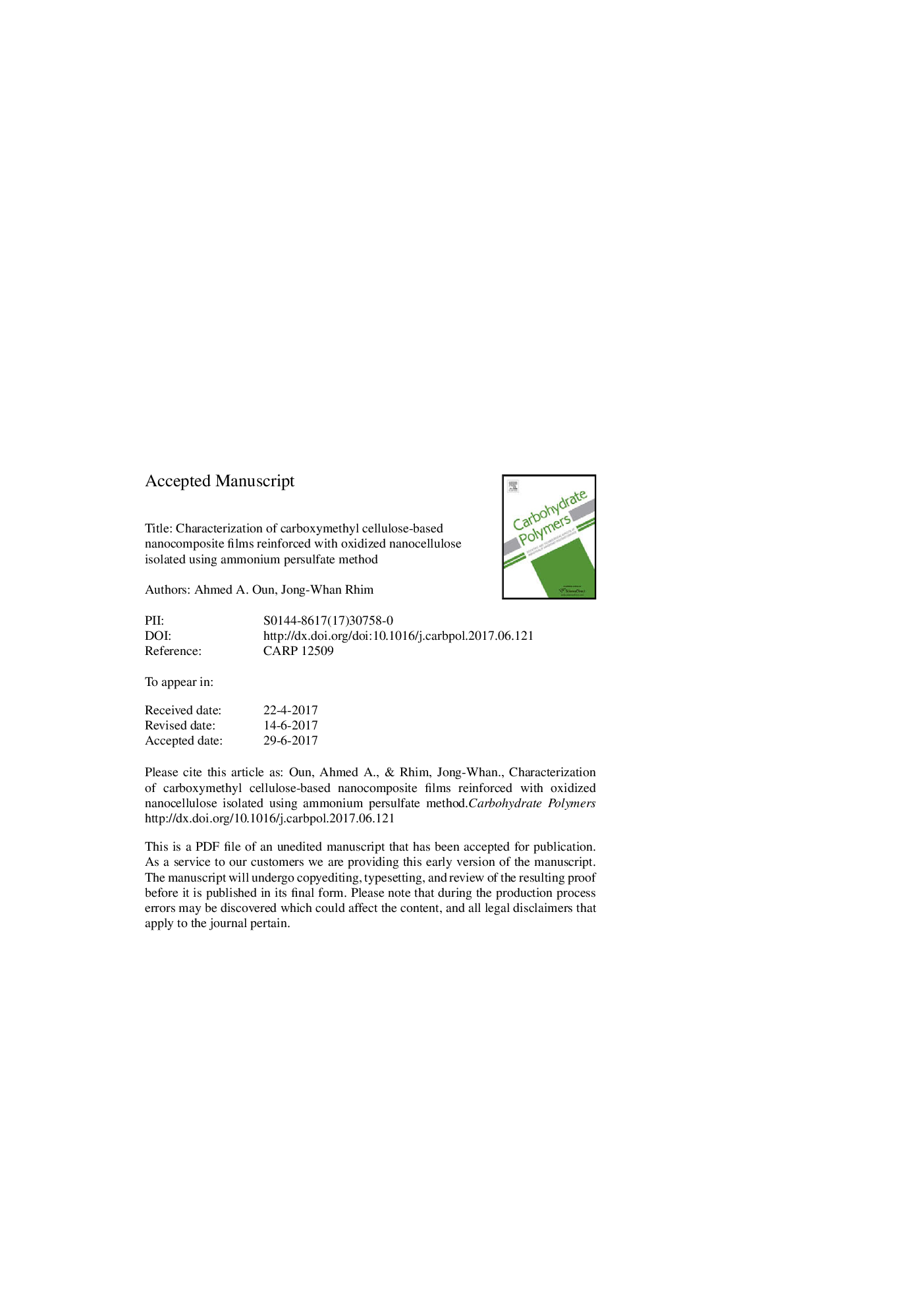| Article ID | Journal | Published Year | Pages | File Type |
|---|---|---|---|---|
| 5156833 | Carbohydrate Polymers | 2017 | 35 Pages |
Abstract
Cellulose nanocrystals (CNCs) were isolated from cotton linter (CL) and microcrystalline cellulose (MCC) using an ammonium persulfate (APS) method for a simultaneous isolation and oxidation of CNCs. The CNCs were in rod-like shape with a diameter of 10.3Â nm and 11.4Â nm, a length of 120-150Â nm and 103-337Â nm, a crystallinity index of 93.5% and 79.1% for the CNCCL and CNCMCC, respectively. The suspensions of oxidized CNCs were transparent and stable with the zeta potential values of â50.6Â mV and â46.9Â mV. The CNCs were uniformly distributed within the carboxymethyl cellulose (CMC) polymer matrix. The tensile strength (TS) increased by 102% and 73%, and elastic modulus (E) increased by 228% and 166% with the incorporation of at 10Â wt% of CNCCL and CNCMCC, respectively. Conclusively, the CNCCL showed a more uniform particle size distribution, higher crystallinity, transparency, thermal stability, and superior mechanical strength compared with the CNCMCC.
Related Topics
Physical Sciences and Engineering
Chemistry
Organic Chemistry
Authors
Ahmed A. Oun, Jong-Whan Rhim,
